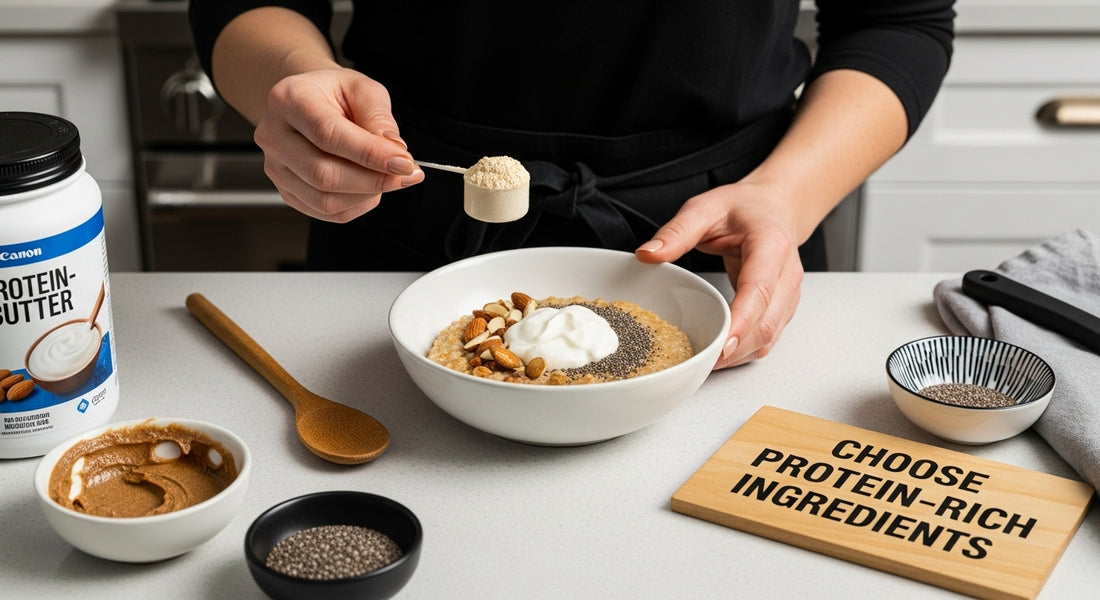
How to Add More Protein to Porridge Naturally
Share
Many think porridge is all about comforting warmth and slow-burning energy. Yet a normal bowl often holds less than 8 grams of protein per serving, leaving you hungry before midday. The real surprise is how easy it is to turn your breakfast staple into a nutrient-dense, protein-rich powerhouse that thoroughly supports you through perimenopause and beyond.
Table of Contents
- Step 1: Choose Protein-Rich Ingredients
- Step 2: Prepare Your Porridge Base
- Step 3: Incorporate Protein Sources
- Step 4: Mix Thoroughly And Taste
- Step 5: Finalize Your Serving
Quick Summary
| Key Point | Explanation |
|---|---|
| 1. Choose protein-rich ingredients | Opt for nuts, seeds, Greek yoghurt, or protein powder to boost protein in your porridge. |
| 2. Select a nutritious porridge base | Use ancient grains like quinoa or amaranth for superior nutritional benefits over standard oats. |
| 3. Incorporate protein effectively | Mix in protein sources uniformly, ensuring even distribution and a pleasing texture. |
| 4. Taste and adjust your porridge | Always taste after mixing to refine texture and flavour; adjust as needed for optimal enjoyment. |
| 5. Finalise with appealing toppings | Garnish with fresh fruits and nuts for enhanced nutrition and visual appeal in your breakfast. |
Step 1: Choose Protein-Rich Ingredients
Adding more protein to your porridge naturally begins with carefully selecting nutrient-dense ingredients that boost both flavour and nutritional profile. The key is understanding which protein-rich components seamlessly blend into your morning meal while providing essential amino acids and supporting metabolic functions.
Start by exploring plant-based protein sources that offer versatility and robust nutritional benefits. Ingredients like almonds, chia seeds, hemp seeds, and quinoa flakes provide substantial protein content without overwhelming your porridge’s delicate texture. Nuts and seeds not only contribute protein but also introduce healthy fats and micronutrients that support overall wellness. Sprinkle them generously on top or mix them directly into your oats for an instant protein upgrade.
For those seeking dairy or animal-based options, Greek yoghurt offers an exceptional protein boost. A single serving can contribute up to 15-20 grams of protein, transforming your basic porridge into a powerhouse breakfast. Protein powder - particularly whey or plant-based varieties - presents another straightforward method to increase protein content. When selecting protein powders, prioritize clean ingredient lists and avoid those with excessive artificial additives. Learn more about choosing high-quality protein sources for your diet.
Consider these protein-rich additions to your morning porridge:
- Almond butter or peanut butter (2-4 tablespoons)
- Chia seeds or hemp seeds (2-3 tablespoons)
- Greek yoghurt (1/4 to 1/2 cup)
- Protein powder (1 scoop)
- Chopped nuts like almonds or walnuts (1/4 cup)
Experimenting with different combinations ensures you discover a protein-enriched porridge that matches your taste preferences and nutritional requirements.
The following table compares several natural protein-rich ingredients you can add to your porridge, highlighting their protein content and key nutritional benefits.
| Ingredient | Approximate Protein (per serving) | Additional Nutritional Benefits |
|---|---|---|
| Greek yoghurt (1/2 cup) | 10-15g | Calcium, probiotics, creamy texture |
| Chia seeds (2 tbsp) | 4g | Omega-3, fibre, gentle crunch |
| Hemp seeds (2 tbsp) | 6g | Omega-3, minerals, mild nutty flavour |
| Almond butter (2 tbsp) | 6g | Healthy fats, vitamin E, creaminess |
| Quinoa flakes (1/2 cup) | 6-7g | All essential amino acids, fibre |
| Protein powder (1 scoop) | 15-20g | Quick protein, variable micronutrients |
| Walnuts (1/4 cup) | 5g | Omega-3, antioxidants, crunch |
Step 2: Prepare Your Porridge Base
Preparing the perfect porridge base sets the foundation for a protein-rich breakfast that nourishes and sustains you through the morning. The selection of your base grain is crucial, especially for those navigating the nutritional challenges of perimenopause. Ancient grains offer superior nutritional profiles compared to traditional rolled oats, providing more complex nutrients and better digestibility.
Consider using nutrient-dense alternatives like quinoa, amaranth, or einkorn as your primary porridge grain. Explore our guide to ancient grains that can transform your breakfast routine. Quinoa, a complete protein source, contains all nine essential amino acids, making it an exceptional choice for those seeking to increase protein intake naturally. Amaranth offers similar benefits, with a slightly nuttier flavour profile that adds depth to your morning meal.
The liquid base you choose dramatically impacts both protein content and overall nutritional value. While water works fine, consider upgrading to protein-rich liquids that enhance both taste and nutrition. Unsweetened almond milk, soy milk, or even a light protein shake can serve as excellent base liquids. These alternatives not only boost protein content but also introduce additional vitamins and minerals essential during perimenopausal years.
When cooking your porridge, pay close attention to the cooking method and ratio of liquid to grain. A general guideline is using 1:2 ratio of grain to liquid, though this can vary slightly depending on your chosen grain. Cooking times range between 10-15 minutes for most ancient grains, with quinoa typically requiring less time compared to traditional oats. Stir occasionally to prevent sticking and ensure even cooking, which helps maintain a smooth, creamy texture.
Key considerations for your porridge base:
- Use 1/2 cup of quinoa or amaranth per serving
- Choose protein-enriched liquids like soy or almond milk
- Cook on medium-low heat for consistent texture
- Stir periodically to prevent burning
- Allow porridge to rest for 2-3 minutes after cooking to achieve optimal consistency
By thoughtfully preparing your porridge base, you create a nutritious canvas ready for the protein-rich toppings and mix-ins you’ll add in the next step of your protein-boosting journey.
Step 3: Incorporate Protein Sources
Incorporating protein sources into your porridge transforms a simple breakfast into a nutritionally powerful meal designed to support hormonal balance and sustained energy. The art of protein integration goes beyond simply adding ingredients; it requires strategic layering that maintains delightful texture and enhances overall taste experience.
Protein powders offer an immediate and efficient method of boosting nutritional content. Discover essential tips for using natural plant-based protein powders that seamlessly blend into your morning porridge. When selecting protein powders, opt for clean, minimally processed varieties like pea, hemp, or brown rice protein. These plant-based options not only provide essential amino acids but also support digestive health during perimenopausal transitions.
Consider incorporating whole food protein sources that offer additional nutritional benefits. Nut butters like almond or cashew butter introduce rich, creamy textures while delivering healthy fats and protein. Greek yoghurt, when stirred through warm porridge, creates a luxurious consistency and adds substantial protein content. For those preferring dairy-free alternatives, silken tofu can be blended directly into the porridge base, creating a smooth, protein-rich foundation that remains virtually undetectable in taste.
Seeds present another excellent protein incorporation strategy. Chia seeds, hemp seeds, and ground flaxseeds not only boost protein but also provide omega-3 fatty acids crucial for managing perimenopausal symptoms. Sprinkle these directly onto your porridge or mix them into the base during cooking for enhanced nutritional profile. Their subtle nutty flavours complement most porridge variations without overwhelming the primary taste.
Key protein integration techniques:
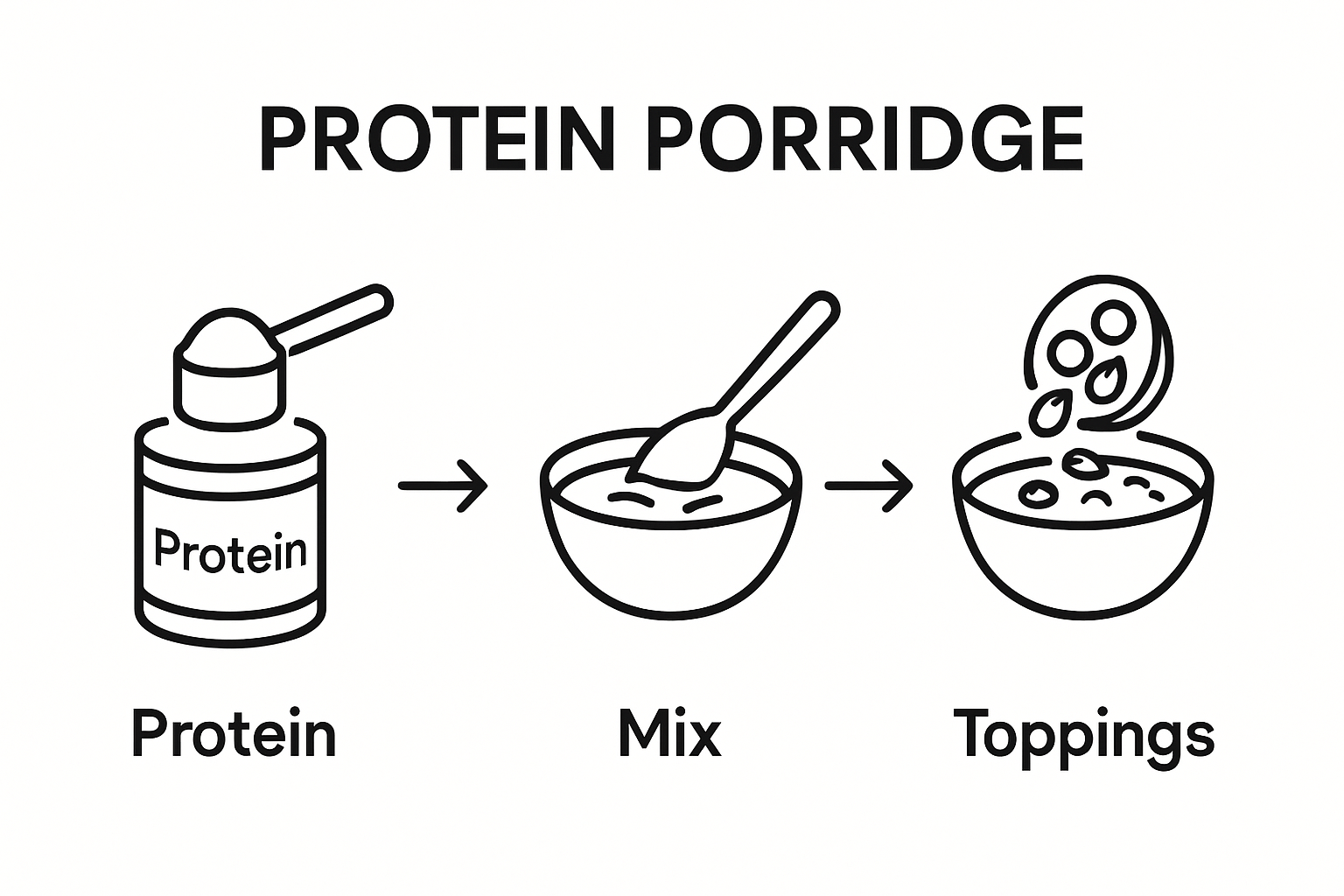
- Add 1-2 tablespoons of protein powder per serving
- Incorporate 2-3 tablespoons of nut butter
- Mix in 1/4 cup Greek yoghurt or silken tofu
- Sprinkle 1-2 tablespoons of mixed seeds
- Stir protein sources thoroughly to ensure even distribution
Remember that protein absorption and effectiveness depend on both quantity and quality.
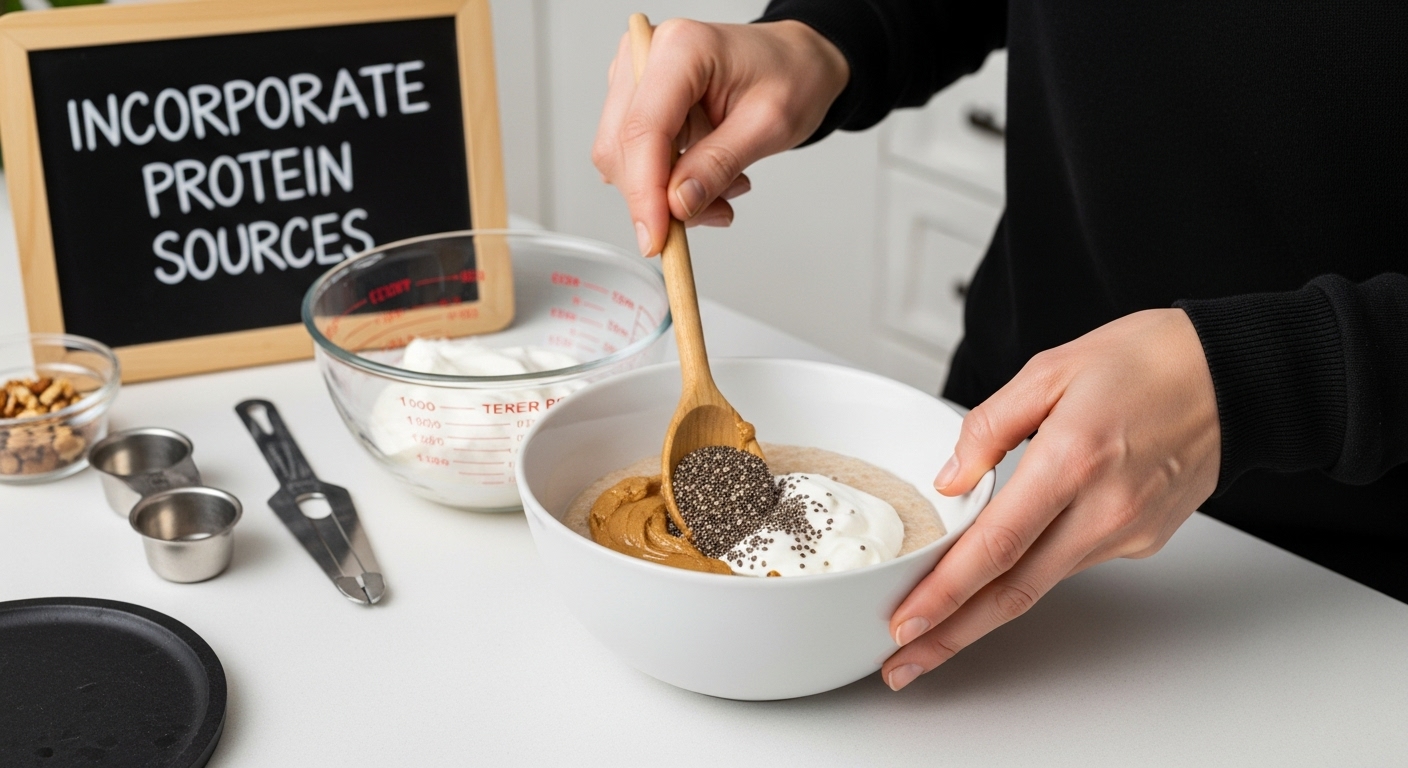 Aim for a balanced approach that introduces variety and ensures your porridge remains an enjoyable, nourishing start to your day. Experiment with different combinations to discover your perfect protein-rich morning meal.
Aim for a balanced approach that introduces variety and ensures your porridge remains an enjoyable, nourishing start to your day. Experiment with different combinations to discover your perfect protein-rich morning meal.
Step 4: Mix Thoroughly and Taste
The mixing stage represents a critical moment in creating a protein-rich porridge that not only nourishes but delights the palate. Thorough incorporation determines the final texture, flavour distribution, and overall eating experience, particularly important for perimenopausal individuals seeking consistent nutritional support. Proper mixing ensures that protein sources blend seamlessly, preventing clumping and creating a smooth, enjoyable breakfast.
Begin by using a sturdy wooden spoon or silicon spatula, which allows for comprehensive ingredient integration without damaging the delicate grain structure. Circular stirring motions work best, starting from the centre and moving outwards to guarantee even distribution of protein powders, nut butters, or yoghurt. The goal is achieving a uniform consistency where no single ingredient dominates the others. Explore our detailed guide on creating perfectly balanced porridge to refine your technique.
Taste becomes your most important validation tool during this stage. Temperature and ingredient interaction can dramatically alter flavour profiles, so sampling your porridge immediately after mixing provides critical insights. If protein powder introduces a slightly chalky texture, additional liquid or a brief resting period can help soften the overall mouthfeel. For plant-based protein sources, a pinch of cinnamon or a drizzle of honey can neutralize any potential bitterness, creating a more palatable experience.
Temperature management plays a subtle yet significant role in protein absorption and taste. Allow your porridge to cool slightly after initial cooking, which helps stabilize protein structures and enhances flavour melding. Stirring periodically during cooling prevents surface hardening and maintains an inviting, creamy texture. Consider using a wide, shallow bowl that allows for easier mixing and helps regulate temperature more efficiently.
Key mixing and tasting considerations:
- Stir in circular motions for 30-45 seconds
- Taste immediately after mixing
- Adjust liquid content if texture seems too thick
- Allow 1-2 minutes of resting time after mixing
- Use a wide bowl for easier incorporation
Remember that each batch of porridge is unique. Your personal taste preferences, chosen protein sources, and specific ingredients will influence the final result. Embrace this variability as an opportunity for culinary creativity, understanding that perfecting your protein-rich porridge is a delightful journey of continuous refinement.
Below is a step overview table summarising each main phase of making protein-rich porridge, with key actions and outcomes to guide your preparation process.
| Step | Key Action | Main Outcome |
|---|---|---|
| Choose Ingredients | Select protein-rich additions | Increased protein & varied nutrition |
| Prepare Porridge Base | Cook preferred grain with protein liquid | Nutrient-rich, creamy porridge foundation |
| Incorporate Protein Sources | Mix in powders, seeds, nuts, or yoghurt | Even protein distribution and improved flavour |
| Mix & Taste | Stir thoroughly and adjust as needed | Smooth texture with balanced, pleasant flavour |
| Finalise Serving | Garnish and measure portions | Attractive, balanced, and satisfying breakfast |
Step 5: Finalize Your Serving
Finalizing your protein-rich porridge transforms a nutritious base into a visually appealing and satisfying meal that supports perimenopausal wellness. Strategic topping selection becomes crucial, offering not just aesthetic pleasure but additional nutritional complexity that enhances the foundational protein content you’ve carefully developed.
Consider layering complementary textures and flavours that provide both visual intrigue and nutritional benefit. Fresh berries like blueberries and raspberries contribute antioxidants that support hormonal balance, while providing a burst of natural sweetness. Chopped nuts such as almonds or walnuts introduce healthy fats and additional protein, creating delightful textural contrast against the creamy porridge base. Explore our comprehensive guide to creating balanced, nutritious meals that support your wellness journey.
Precision in portioning remains essential during the final serving stage. Use a kitchen scale or measuring cups to ensure consistent protein intake, particularly important for perimenopausal individuals managing metabolic changes. A typical serving should range between 1-1.5 cups, depending on individual nutritional requirements and activity levels. Consider drizzling a small amount of honey, maple syrup, or a plant-based alternative to enhance flavour without compromising the nutritional integrity of your carefully crafted porridge.
Temperature presentation plays a subtle yet significant role in meal satisfaction. Serve your porridge immediately after final mixing to maintain optimal texture and temperature. If preparing in advance, a brief re-warming can restore creamy consistency, taking care not to overheat and compromise protein structures. Ceramic or wooden bowls can help maintain temperature and provide a more grounding eating experience compared to standard ceramic or metal serveware.
Key serving and presentation considerations:
- Use fresh berries as nutritional garnish
- Sprinkle nuts for added protein and texture
- Measure portions consistently
- Serve immediately after preparation
- Choose bowls that retain heat effectively
Remember that each serving represents a personalised nutritional experience. Your protein-rich porridge is more than a meal; it’s a deliberate act of self-care, supporting your body’s changing needs during perimenopause. Embrace creativity, listen to your body’s responses, and enjoy the nourishing journey of crafting the perfect protein-enhanced breakfast.
Unlock a More Powerful Breakfast With Ancient Grains & Premium Vegan Protein
Are you tired of porridge that leaves you feeling hungry far too soon or simply does not support your wellness goals? The article explored exactly how to add more protein to porridge naturally, highlighting the challenge of finding ingredients that truly nourish without unwanted sugars or fillers. Many people struggle to build a breakfast that sustains energy, balances hormones, or meets their protein needs, especially during times of life when nutrition matters most.
Explore our Vegan Protein Powders and discover ancient grains that deliver real, satisfying nourishment with every bowl. Our thoughtfully selected plant-based proteins and time-tested grains blend effortlessly into your morning routine, helping you achieve the balanced, high-protein meal you deserve.
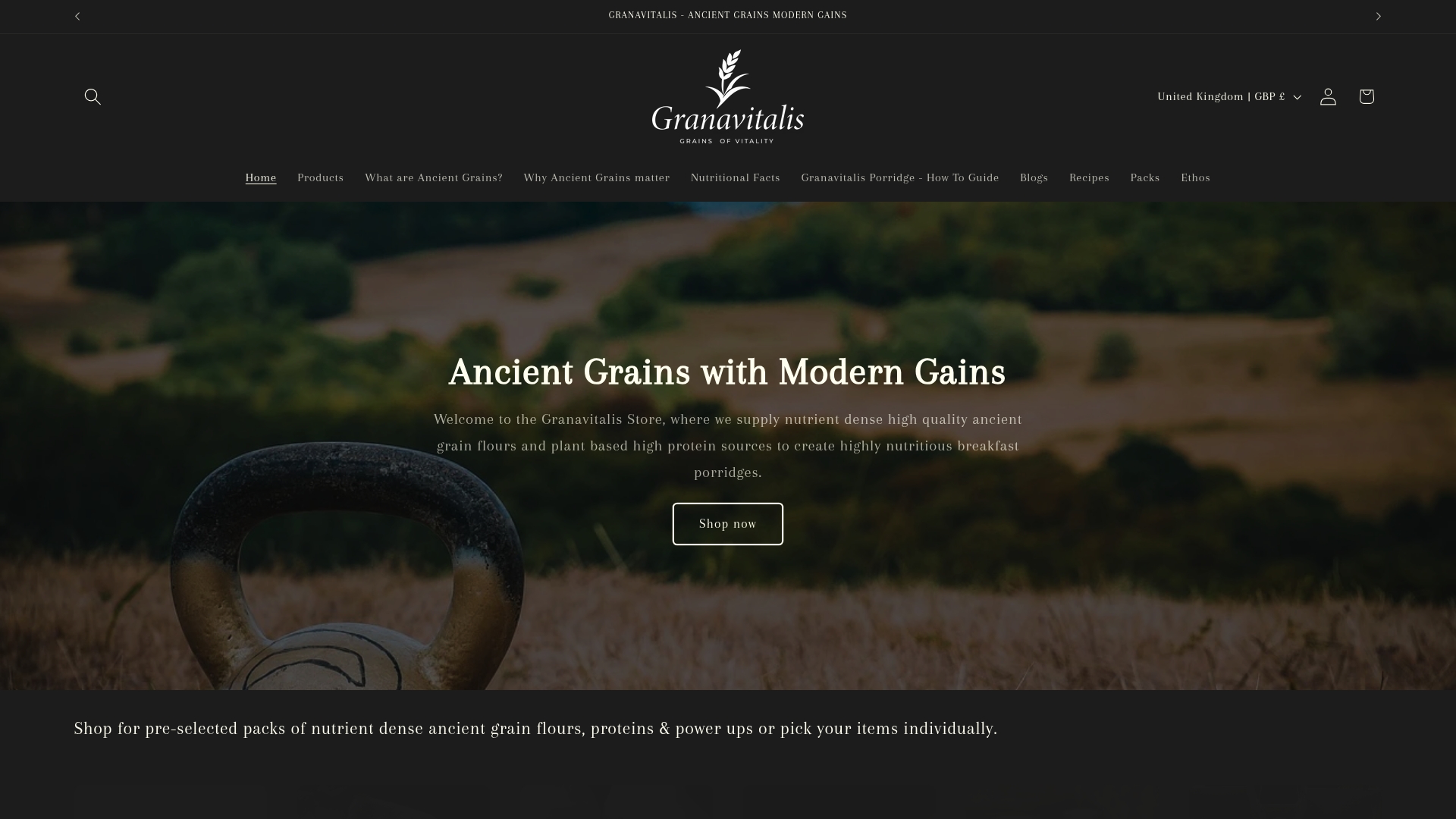
Transform your breakfast experience today. Take the next step towards feeling energised and resilient each morning with the Granavitalis ethos of no compromise. For delicious ancestral foods and support for your health journey, visit Granavitalis.com or discover targeted support like our Menopause Support Pack. Your best mornings start with mindful choices and nourishing ingredients, so make the switch now and feel the difference.
Frequently Asked Questions
How can I increase protein content in my porridge naturally?
To boost the protein content in your porridge, consider adding protein-rich ingredients such as Greek yoghurt, nut butters, seeds (like chia or hemp), and protein powders. These additions not only enhance flavour but also provide essential amino acids necessary for overall wellness.
What are some good plant-based protein sources for porridge?
Great plant-based protein sources include quinoa, amaranth, chia seeds, and hemp seeds. These ingredients offer high protein content while adding nutritional value without compromising the dish’s texture.
How should I prepare the liquid base for protein-rich porridge?
Instead of using water, opt for protein-enriched liquids like unsweetened almond milk or soy milk to enhance both flavour and nutrition. These alternatives support a higher protein intake and provide additional vitamins and minerals.
What is the best way to mix protein sources into my porridge?
Mix thoroughly using a sturdy spoon to ensure even distribution of protein powders, nut butters, or yoghurt. Start stirring in circular motions from the centre to prevent clumping and create a smooth, creamy texture.
